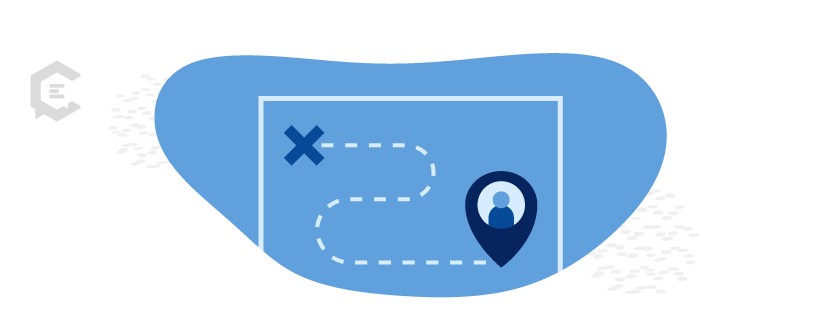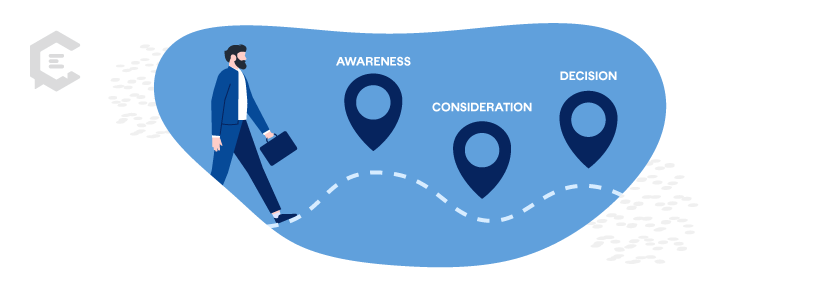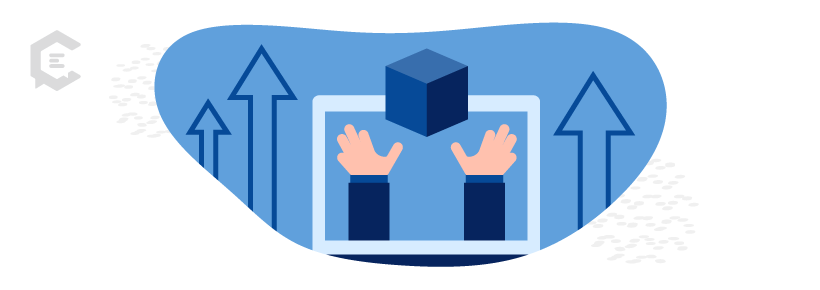There’s a science behind turning strangers into prospects. It’s not as simple as creating content, posting it on your blog or website, and waiting for the leads to come in. You need to nurture those prospects through the entire buyer’s journey, guiding them toward the end goal — conversion. This is where your hard work pays off.
To do this, you must create content that aligns with every stage of the buyer’s journey — from awareness to purchase. All companies should use the buyer’s journey to create their content marketing strategy. Otherwise, your content may not reach your target audience at the ideal time in the customer journey.
There is a framework that companies can follow to ensure that content is getting in front of potential buyers at the right time. This helps to increase the chances of prospects turning into qualified leads and, ultimately, customers. First, consider why and how your content strategy needs to align with the buyer’s journey.
Why you need to map your content to the buyer’s journey
A recent survey by Semrush shows that 97 percent of respondents state that content is an essential aspect of their marketing strategy. However, creating content isn’t enough.
Customers have different needs depending on where they are in the buyer journey. If your content does not provide the information they are looking for in their stage of the buying process, you may get overlooked for another company that has provided the content that aligns with their current needs.
If you’ve spent time creating an effective content marketing strategy, but you’re not getting conversions, chances are you need to align your content with the buyer’s journey. The buyer’s journey isn’t often easy for consumers either. In fact, 77 percent of buyers considered their latest purchase to be very difficult. You can simplify it for potential customers by aligning your content with the buyer’s journey. Companies that do this will benefit from the following:
- Higher quality leads: When you take a strategic approach to acquire prospects, this will ultimately result in higher quality leads. Yes, you may take in fewer leads because you have a highly targeted approach, but these leads are more likely to convert.
- Shorter sales cycle: A more targeted approach will result in less time needed for conversion by guiding your prospects through the buyer journey.
- Reduced costs: A targeted approach means less money spent on customer acquisition. Rather than deploying several strategies that may or may not work an effective content strategy relies on a targeted approach that gets your content in front of the right buyers at the right time.
What is the buyer’s journey?
With the amount of information available online, companies no longer make impulse purchases. Instead, they made choices backed by research. You can increase your chances of gaining qualified leads by ensuring that your content aligns with the buyer’s journey.
Content focused on the buying process aims to inform and become a trusted resource that customers will return to get the information they need. Trying to make a sale too early in the process can often turn potential customers away. Instead, you should aim to educate your audience with your content so they will return to you in the future.
The buyer’s journey consists of three key stages:
Awareness
During the awareness or discovery stage, your potential customer has a challenge they are trying to solve. This is the very beginning of the buyer’s journey. Would-be customers are searching for content that will help them solve these needs. This is where your content comes in.
Content like blog posts and articles is critical during the awareness stage. This content should be informational rather than promotional. This is not the stage to explicitly sell but rather to inform. Effective awareness content will rely on the research you’ve done about your target market. You’ll need to consider their pain points and create content that solves these challenges.
Keep in mind that different people consume content in different ways. Some may prefer to read a blog post — this is why 76 percent of content marketers use blogging to distribute their content. Others would rather watch a quick video. Short-form video continues to grow, and 30 percent of marketers plan to invest more in video marketing. A mix of different content types will ensure you appeal to different needs.
Consideration
The consideration stage is where buyers begin to consider their options for solving their challenges. They’re looking for more in-depth content that will provide answers to their questions.
During this stage, potential customers look at various companies that can solve their needs, gathering research to make an informed decision. To make sure you make the shortlist, you’ll want to provide content that provides the answers to their questions and the solution to their challenges.
This includes long-form content like white papers, which will enable you to discuss pain points in depth, and webinars and content encouraging readers to try a free trial. Content in this phase should highlight the benefits of your solution while enabling you to get a prospect’s contact information. Product brochures and how-to videos are also valuable assets in the consideration phase.
Email is another critical component of the consideration stage. Email marketing will automate the process of getting valuable information to your audience. In fact, 64 percent of B2B marketers consider email marketing to be effective in helping them meet business goals. 69 percent of content marketers used email to distribute content, making it a popular channel for B2B content.
Decision
By the time a potential buyer gets to the decision stage, they are well aware of what they need in a solution and are narrowing it down to the one that is the best fit for their business. At this stage, they are more likely to make a purchase.
So, introduce content that shows the benefits of your product or service. Whereas in the other stages, you were focused only on identifying challenges and how to solve those challenges, now is the time to show where you come in and why you’re the best choice.
This is why case studies are a vital part of the decision stage. They allow you to show how others who have purchased your product or service have benefited from choosing your business. The Content Marketing Institute’s (CMI) B2B content marketing report shows that successful content marketers were more likely to use case studies (73 percent vs. 61 percent).
The decision stage is also the time to ask potential buyers to take a live demo. This gives them a view of your solution firsthand and allows them to ask questions to truly understand how your solution is the best one to meet their needs.
Elevate your content by aligning it with the buyer’s journey
Research from Gartner shows that only 17 percent of a prospect’s time is spent speaking with prospective suppliers. This means you’ll need to look for other ways to help them convert, which is where your content strategy comes in. To ensure this strategy benefits your business, it must align with the buyer’s journey. Otherwise, the information you provide could be like drinking out of a firehose — too much information at the wrong time. By taking a targeted approach, you’ll be able to reach prospects at the right time.
Remember that any effective content strategy will begin with research. You must know your audience before you try to appeal to them. Once you know their challenges, you’ll be able to create content that addresses these challenges and help establish yourself as a helpful resource for your key audience.
Do you need help with your content strategy? Learn how ClearVoice can help.






